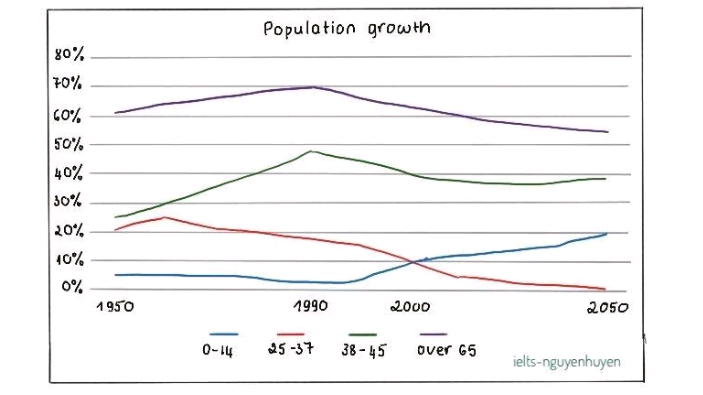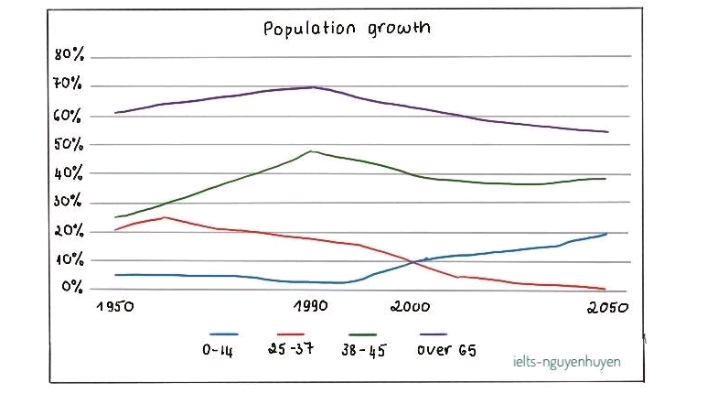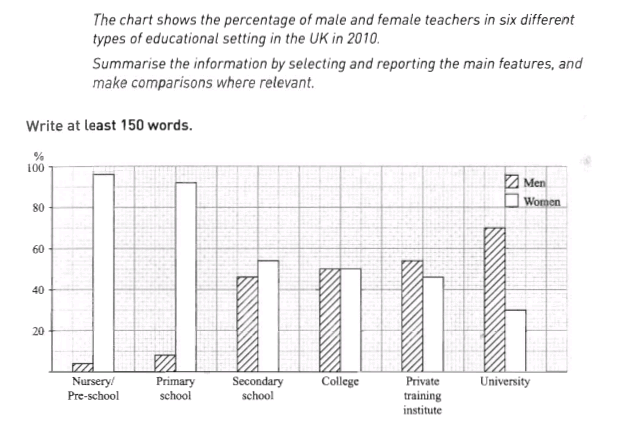Writing Feedback /
The line chart illustrates the population growth in New Zealand between 1950 and 2050 [5]
New Zealand population analysis
The line chart illustrates the population growth in New Zealand between 1950 and 2050.
Overall, the percentage of New Zealand population aged 65 and over dominated over the period show on the graph. While the age of 14 and under saw an increase, the people falling into the 24 to over 60 age group had fallen.
In the year 1950, over 60% of population of New Zealand was the people aged over 65. The respective figure for people between 25-37 and 38-45 was around just over 20% and 25%. The proportion of children falling Into the 0 to 14 age group made up the lowest percent was close to 5%. Over the following 40 years, the 38-45 age people reached its peak, to nearly 50% percent and with the older group rose by around 9%. However, the 25 to 37 age group was down by about 5% and the 14 and under fell steadily in the same period.
From 1990 to 2050, there was a dramatic increase in the people between 0 to 14 age, to nearly 17%. By contrast, the people falling into 38-45 age group dropped to almost 1%. The number of people old aged group had fallen by approximately 15% and 10% for 38 to 45 one.
Hope to receive your comments

Capture.PNG

Capture.PNG



